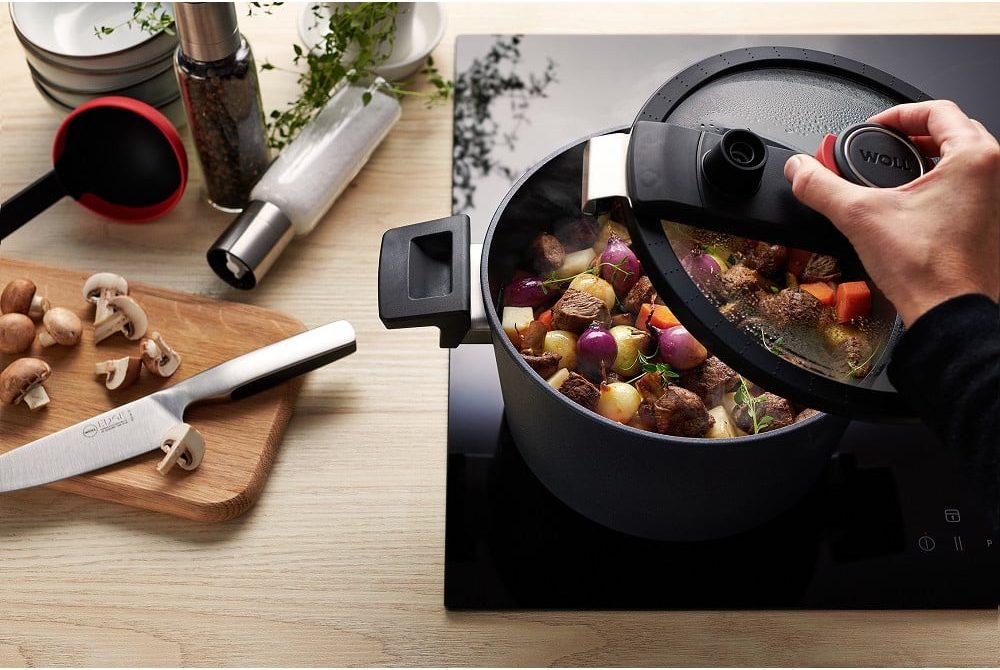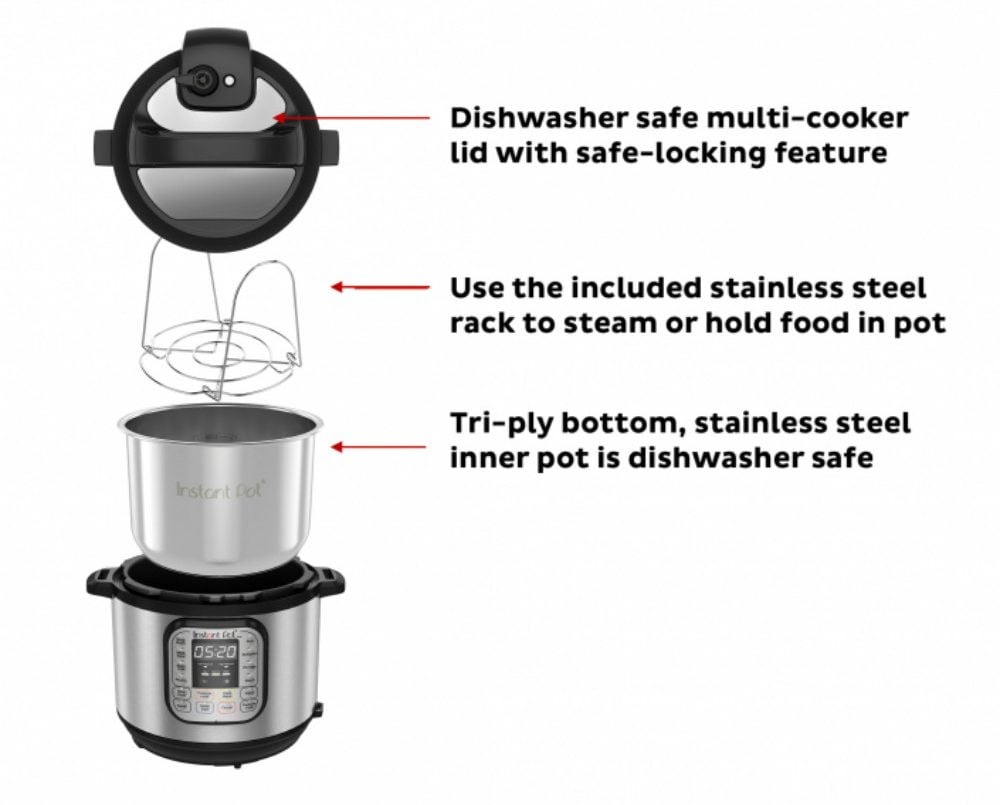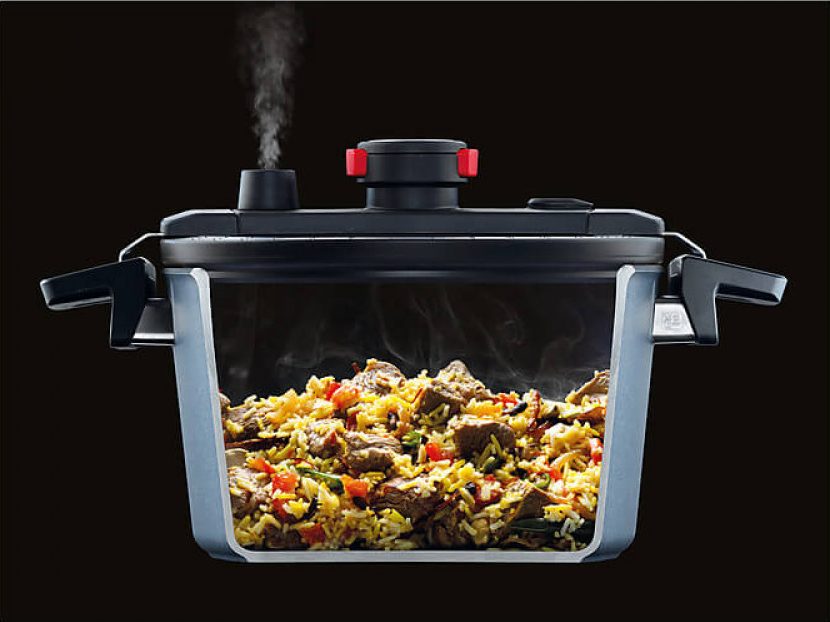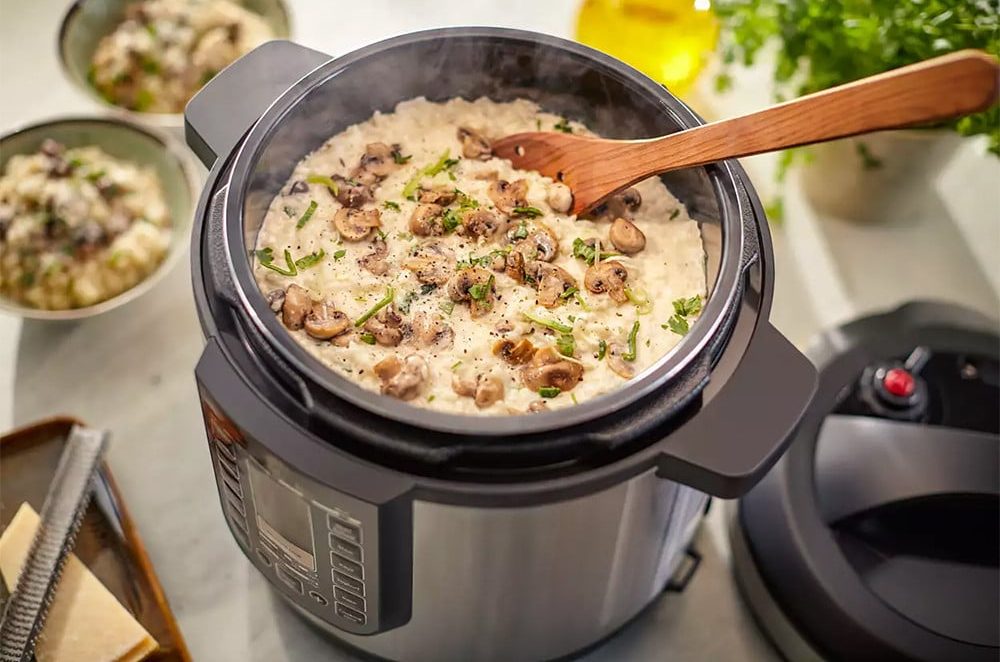
In our fast-paced world, time is of the essence, especially in the kitchen. If you are looking to save time and energy while preparing delicious meals, pressure cookers might be your new culinary best friend. Ready to level up your culinary skills? We'll take you on a journey through the history and mechanics of a pressure cooker, empowering you to harness its potential and create mouthwatering dishes easily.
What is a pressure cooker?
A pressure cooker is essentially a sealed pot that uses high-pressure steam to cook food quickly, which is ideal for those who want fast results. Perfect for making soups, stews, rice, beans, tenderising meat and much more, the pressure cooker is a must-have for busy households. In contrast to a slow cooker, a pressure cooker saves time by significantly reducing cooking times. A pressure cooker retains more nutrients in your food than other cooking methods due to shorter cooking times. Additionally, it requires less energy since everything cooks faster under higher pressures.
A brief history of pressure cookers
The pressure cooker, invented by French physicist Denis Papin in the 17th century, faced a slow journey to popularity due to safety concerns and limited awareness of its benefits. Over the years, the pressure cooker was improved by introducing safety features and technological advancements. Modern pressure cookers of today, such as the top-selling ones from Ninja and Philips, are sleek, efficient, and equipped with modern safety mechanisms, making them beloved kitchen appliances for busy households worldwide.
One of our favourites is the Duo 7-in-1 Multi Cooker from Instant Pot, designed to provide optimal safety and convenience. Complete with dishwasher-safe components for easy cleaning, this clever kitchen essential is fitted with a secure lid with a safe-locking feature to provide peace of mind as you cook up a feast.
How does a pressure cooker work?
The magic lies in its ability to create high-pressure environments. As heat is applied to the pot, water turns into steam and builds up pressure inside. This increased pressure helps reduce cooking time by up to 70%. The tightly sealed lid keeps all the moisture and flavours locked in, resulting in tender meats and perfectly cooked dishes.
Must-try pressure cooker dishes
Your pressure cooker can be used to cook a wide variety of dishes. Here are some inspirations to get you started:
- Salsa Chicken: Place chicken breasts, salsa, and seasonings in a pressure cooker for a flavourful and easy-to-make chicken dish.
- Vegetable Soup: Combine your favourite vegetables, broth, herbs, and spices in the pressure cooker for a comforting and nutritious soup in no time.
- BBQ Pulled Pork: Cook a pork shoulder with barbecue sauce and spices in the pressure cooker, then shred the tender meat for delicious pulled pork sandwiches.
- Lemon Garlic Shrimp: Quickly cook shrimp with lemon juice, garlic, and butter in the pressure cooker, creating a succulent seafood dish that pairs well with pasta or rice.
- Chocolate Lava Cake: Prepare a decadent dessert by baking a rich chocolate cake batter in ramekins inside the pressure cooker, resulting in a warm and gooey chocolate lava centre.
How to Use a Pressure Cooker
Using a pressure cooker can be intimidating, but it's quite simple once you get the hang of it. Before getting started, make sure to read the manufacturer's instructions carefully.
- Firstly, always begin by adding enough liquid to cover the food you are cooking in the pressure cooker. This helps create steam that builds up and creates pressure within the pot.
- Next, ensure your lid is properly sealed before cooking. Most modern pressure cookers have locking mechanisms that prevent them from being opened while under high-pressure levels.
- Once everything is set up and ready to go, turn on your stove or electric burner and allow it to come up to full pressure according to your recipe's instructions. If you're using an electric pressure cooker, simply set your pressure cooker to the right settings and let it do all the work!
- After cooking for the required time based on what you're making (which will vary depending on specific ingredients), slowly release any remaining pressure before opening up your pot.
- Pressure cookers offer faster cooking times without sacrificing flavour and nutrients than traditional methods. Get creative with recipes featuring stews, soups or risottos; they all work well under high-pressure settings!
Next Read: Top 5 Winter Dishes Made Easy in a Pressure Cooker





